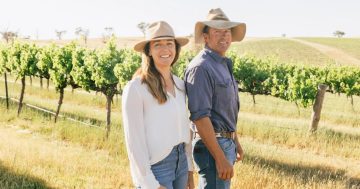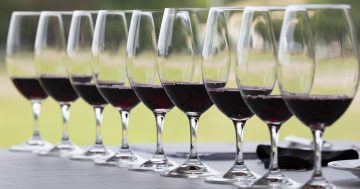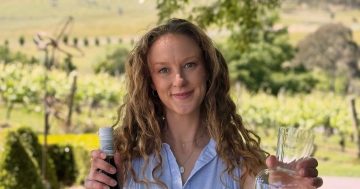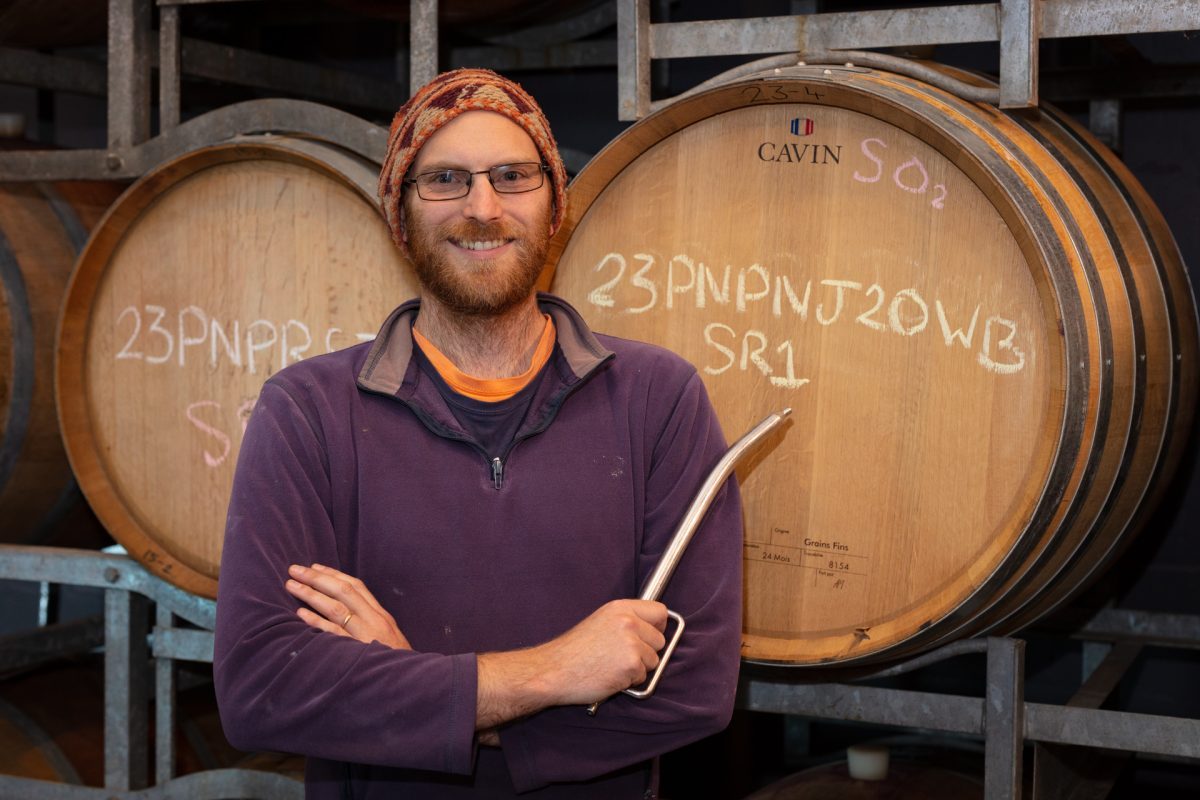
Jacob Law went to Germany to learn the language and left with a love of winemaking that led him to Lerida Estate. Photo: Thomas Lucraft.
Jacob Law went to Germany to learn how to speak German and, instead, learned how to make wine.
“I thought if I went to a regional area there would be fewer English speakers and I’d be forced to learn German. I was wrong. But I can’t say I have any regrets,” he says.
In the years after, he vineyard-hopped around Europe, the United States and Australia before coming to Lerida Estate as a winemaker.
Of all the places he’s been, Lerida stands out as unique owing in part to its lakeside location.
“The lake at the moment is giving us a more temperate climate,” he says. “The evenings aren’t as cold because the lake holds some warmth.
“It enables us to make pinot and chardonnay from a unique site where the sun goes down behind the hill around 5:30 pm in the middle of summer. We’re missing out on several hours of intense, late afternoon sunlight, which gives those varietals a delicate profile and a much longer ripening period.”
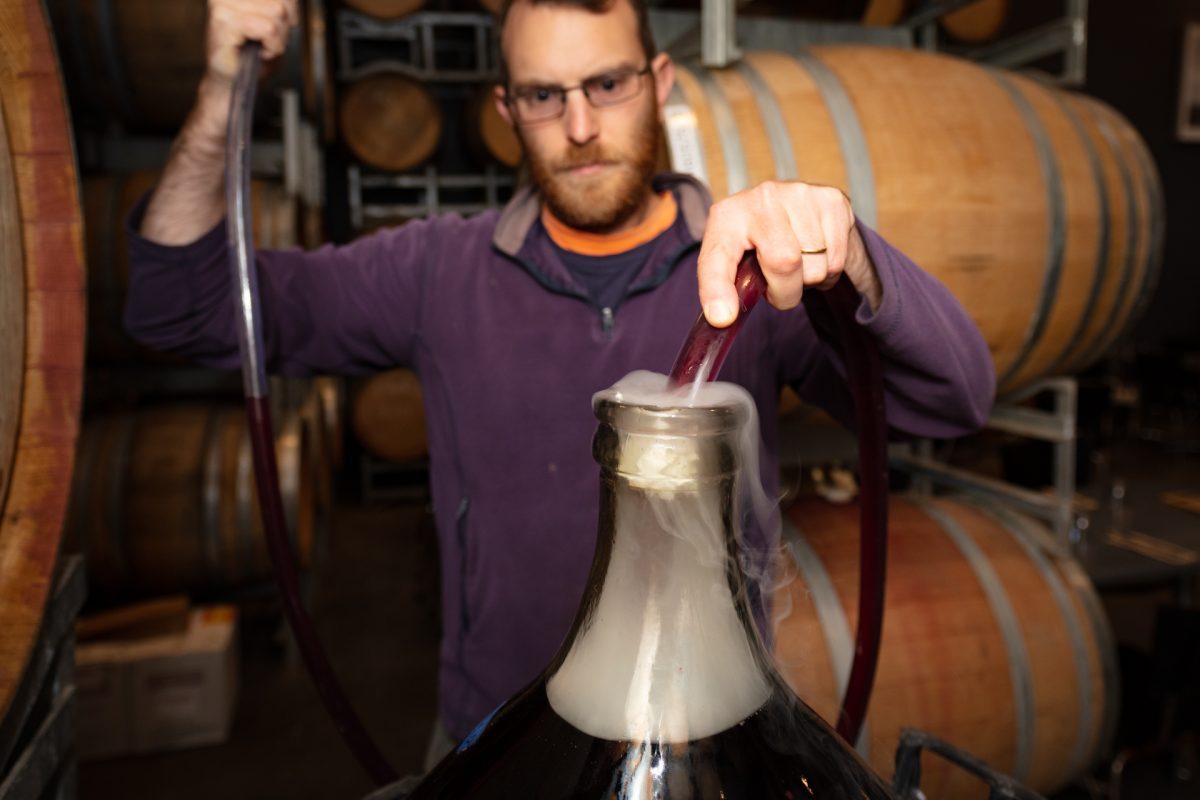
Lerida’s terroir and wine-making philosophies yield a unique offering from the district. Photos: Thomas Lucraft.
While Lerida’s white varietals have garnered their share of attention, historically it’s the winery’s award-winning pinot noir and shiraz that have placed it firmly on the district’s map.
But white or red, all Lerida wines must be characterised as “elegant”.
“When pressing white, we’re very gentle. We want to protect the virgin juice,” he says.
“With the reds, it’s really about delicate management of the ferments and the cap (grape skins that float to the top). Everyone ferments red wines with skins, however the skins will float and you need to homogenise those skins. How you do that affects the outcome and at Lerida, it’s again a very gentle part of the process.”
This yields softer tannins, more complex aromatics and more fruit flavours on the nose – the profile Lerida is known for.
Red wines stay in oak for typically six to nine months but again, the aim is softness.
“We’re looking for a nice balance between that little lift from the oak without overpowering the fruit,” Jacob says.
“It’s up to me to massage this process into what we’re looking for, which is quite distinct from other regional wines. We’re trying to achieve particular things with our wines. We want them to express the glorious fruits we have in the Canberra district and we manage our viticulture and winemaking to achieve that goal.
“It all starts in the vineyards, and the terroir.”

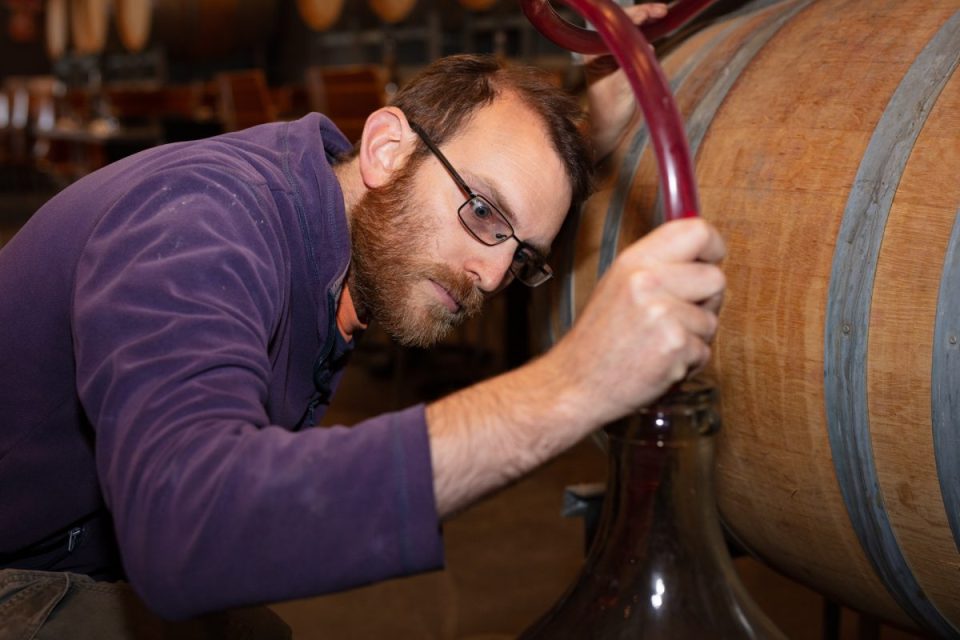
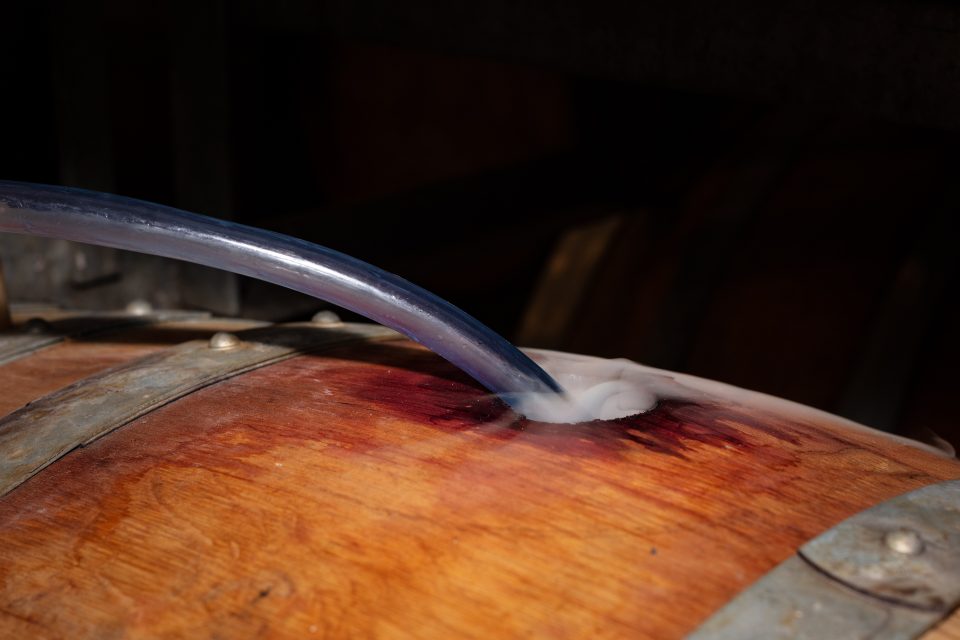
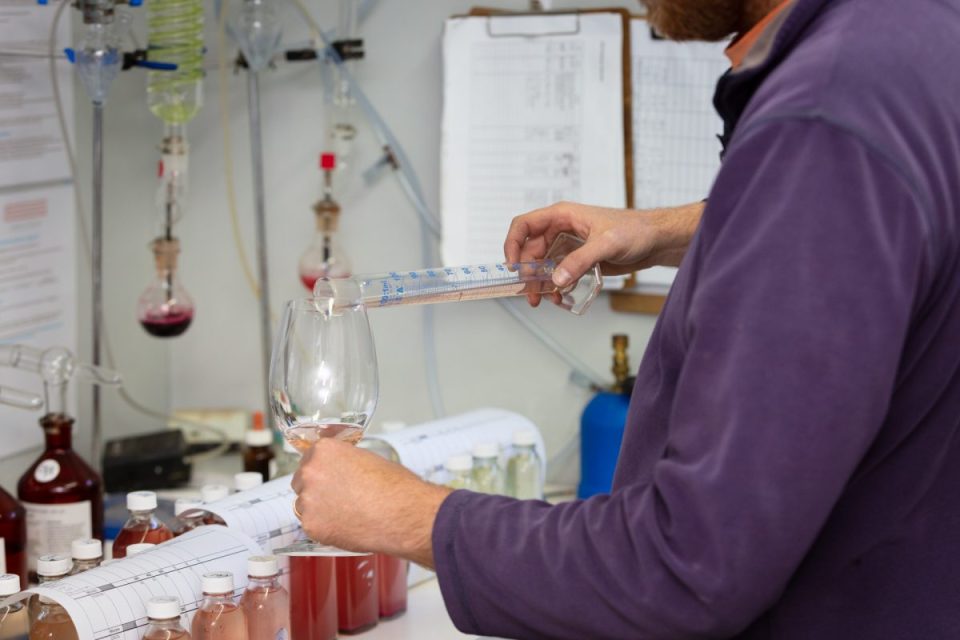
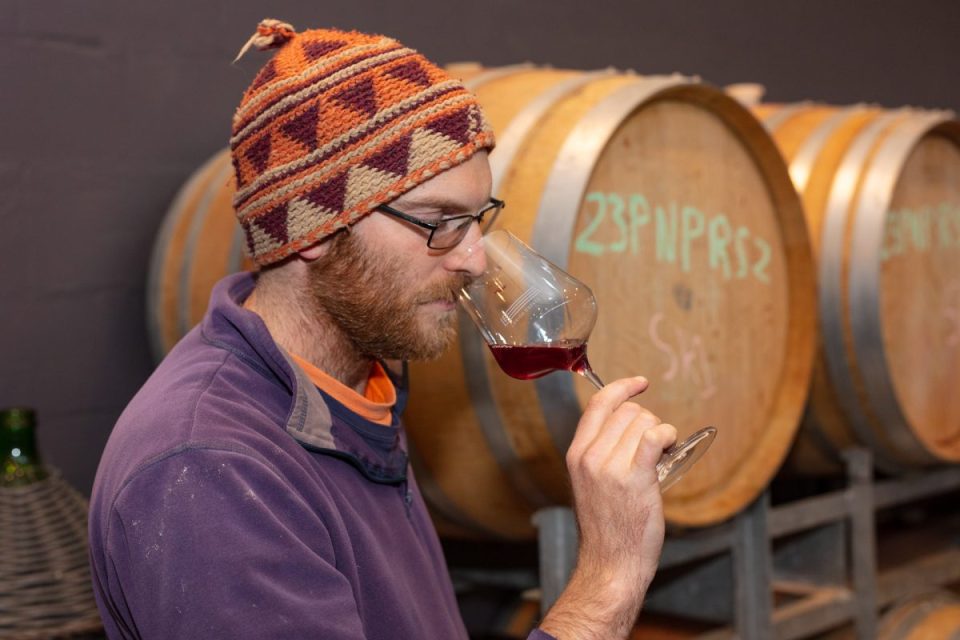
Terroir is a French term that encapsulates the many environmental factors that impact wine, including soil, microclimate, general climactic conditions and even the human influence in the vineyard.
Unlike much of the Canberra district, which sits on a decomposing granite soil over a clay base, Lerida sits on alluvial soil. Specifically, there’s no clay in the root zone and the top layer is rich soil with great moisture-holding capacity. This gives Lerida the ability to “dry farm”, meaning no irrigation is required.
The bottom half of the vineyard is planted over what was once a lake bed. Under the topsoil is a gravelly, sandy sublayer that welcomes the vine’s roots.
It plays a big role in the unique character of the wines.
Elevation plays another key role in terroir. And while the majority of the Canberra district is in the Murrumbateman area – which is flatter, warmer and slightly lower in altitude – Lerida’s spot on the Lake George slope provides a higher altitude. The east-facing vineyard, backed by the Cullerin Range, is protected from the hot afternoon sun, which has dictated production decisions.
“The varietals we use don’t like a lot of heat,” Jacob says.
For these reasons, Lerida cannot benchmark its processes against other surrounding wineries. But that’s ok. The peculiarities of the Lerida environment yield very particular grape-growing circumstances, which means once a year they have the chance to produce something special.
The result is leaner, lighter, cool-climate style wines and above all else, that magic word – elegant.
Visit Lerida Estate for more information.
Original Article published by Dione David on Riotact.



